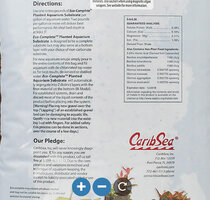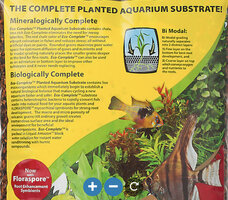Hi @MichaelJ
Looks like you're not alone with Eco Complete problems:

 www.fishlore.com
www.fishlore.com
JPC
Looks like you're not alone with Eco Complete problems:

Carib sea eco complete problems | Freshwater Substrates - Gravel, Sand Forum | 436267
I posted in cloudy water but I thought I would post here too to see if anyone else had the same issues I did or can offer insight. I redid my 29 gallon with carib sea eco complete (about 3-4" ) Same bio media in filter that has been going for years. No fish to start(switched to my other tank)...
JPC




